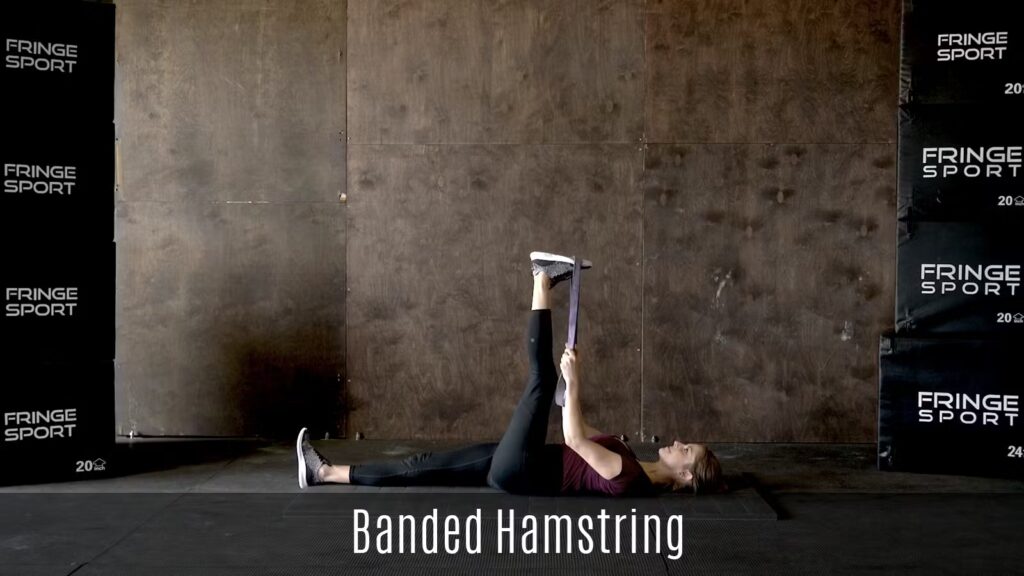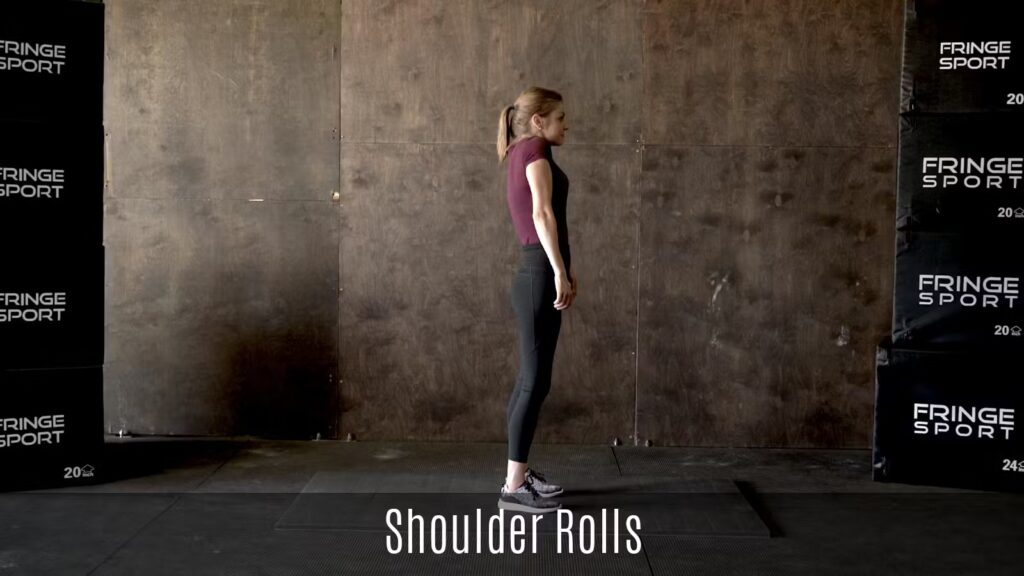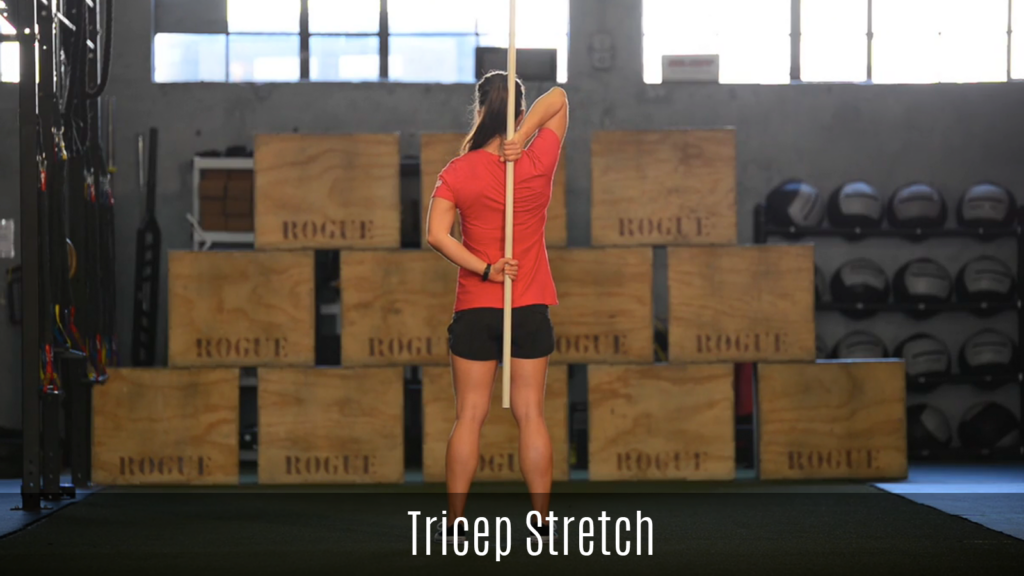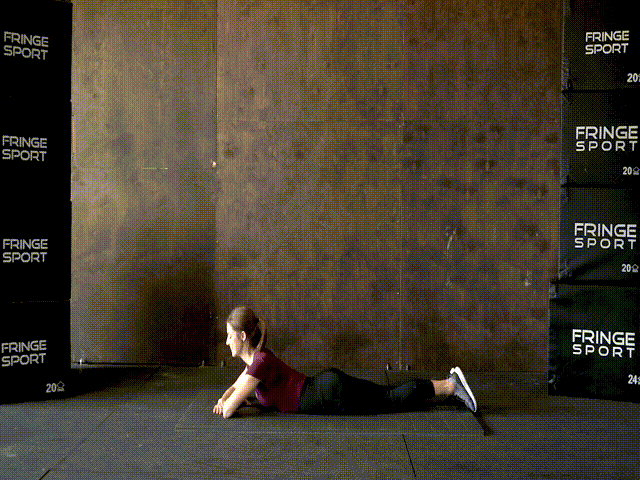
Whether you’re an athlete with long training days or just a person who moves around throughout the day, your quadriceps are some of the hardest working muscle groups in your legs. This quadricep is made up of four separate muscles: the rectus femoris, vastus medialis, vastus intermedius and the vastus lateralis (hence the “quad” part of the name). These four muscles at the front of your thigh work in unison to stabilize your knee joint and bend and straighten your legs.
Your quads work alongside your hamstring and glute muscles to propel you forward when you walk, run and jump, as well as providing a lot of the power you need when squatting heavy weights. In a nutshell, they work overtime to keep you moving and standing upright.
Tight Quads
However, both sedentary and athletic lifestyles can put undue strain on the quads and cause tightness. When the quads get tight, they can pull down on the pelvis which can lead to an anterior pelvic tilt. When the pelvis goes into a tilted position, it’s common for the back to become overarched and lead to uncomfortable lower back pain and tightness. Anyone who has ever struggled with lower back pain knows how annoying and frustrating this can be.
Tight quadricep muscles can also lead to weaker hamstring muscles. While the quadricep muscles are found on the front of the leg, the hamstring muscles are located on the back of the leg. When the quad muscles are tight and the pelvis is pulled into a tilt, this can put the hamstrings into a “stretched” position. This constant stretch in the hamstrings can lead to a loss of tone and strength. This is why it’s important to not only stretch, loosen, and strengthen the quad muscles, but also strengthen the hamstrings. Check out Impossible Fitness for specific hamstring exercises. You can also visit our section for specific hamstring stretches that will help keep your hamstrings in the best possible shape.
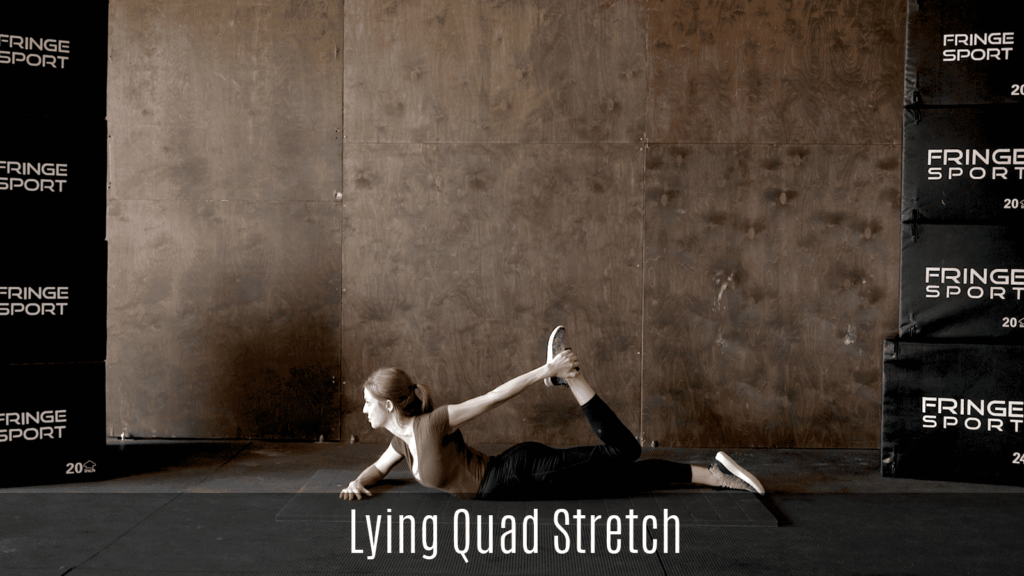
Quadricep Muscle Stretch Benefits
This tightness in the quad muscles can lead to poor posture, knee pain and other unpleasant side effects, so it’s important to stretch this powerful muscle group out either before or after your workouts. Keeping your quads properly stretched will ensure their overall health, increase blood flow to the region, and help prevent any future injury.
It’s good practice to regularly stretch no matter what level of activity you put your body through daily. But, along with a proper meal plan, a well-structured stretching routine is definitely important for athletes of any level. This can stave off injuries from overuse or training, increase performance level, and lead to a better quality of life. All of these things will help keep you in your sport for as long as you want to be there.
What is the Lying Quad Stretch?
A great movement to keep these quad muscles healthy is the Lying Quad Stretch. By lying down, the emphasis is taken off of maintaining your balance so the quads can get properly isolated during the movement. The lying quad stretch can also be beneficial for people who prefer to stretch in a reclined position versus a standing one.
All you have to do to perform this stretch is lie on your stomach on the ground. You can keep your head and chest elevated off of the floor or use your left hand as a pillow for your forehead on the floor. Once you’re in the preferred starting position, bend your right knee and send your right foot up towards your butt. The left leg should remain long and on the ground.
Using your right hand, reach behind you and grab your ankle or foot depending on your level of flexibility. Once you have gotten ahold of your foot, hold this position for at least 30 seconds. It’s important to try your best to keep your hips level and stabilized against the floor. Remember to breathe deeply and use your breath as a gauge. You want to be able to hold this position and still breathe deeply. Don’t force your body into the shape if you don’t yet have the mobility. It’s important to work at your body’s current ability level.
Once you have stretched on one side, return to the starting position and complete for the same amount of time on the other side.
Lying Quad Stretch Equipment and Modifications
There is no equipment needed for this stretch other than some free space on the floor. If you have sensitive hip points, you may want to lay on a carpeted surface or a padded mat or blanket, but this is not completely necessary to perform this exercise.
If you cannot reach your ankle, do not worry. You can use a towel or yoga strap to wrap around your ankle to make this easier. You will most likely feel a very big stretch in your hip flexor area and through the quad. This is what you want to feel. If you ever feel pain, stop the stretch immediately.
How to perform a Lying Quad Stretch

Find a yoga mat or comfortable area of the floor;
Lie in a prone (belly down) position with your legs extended out behind you;
Bend your left knee so your foot is brought up towards your head;
Using your left hand, reach back and grab your left foot.
Now, gently pull your foot further towards your head until your feel a nice stretch in the front of your thigh.
Hold this stretch for 20-30 seconds.
Let your foot return to its original position and repeat the movement for your right leg.
If you can’t reach your foot to perform this stretch, you can also use a resistance band or a towel to help bring your foot forward.

